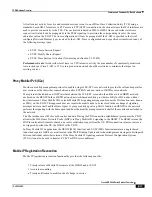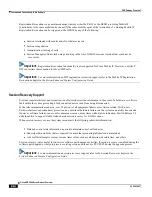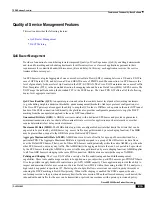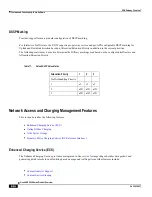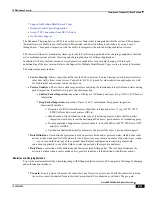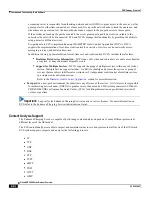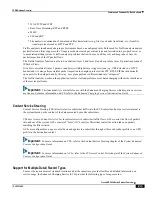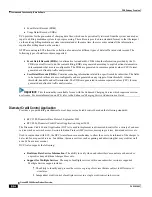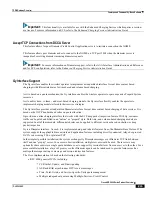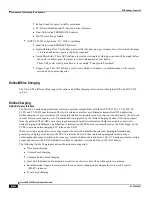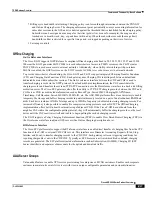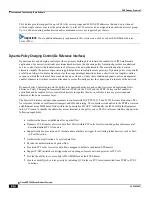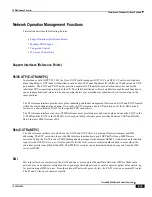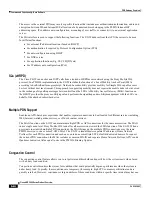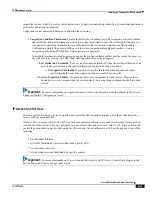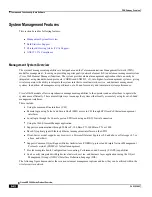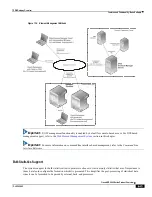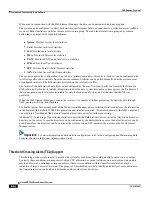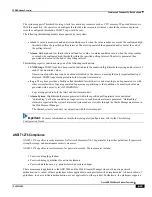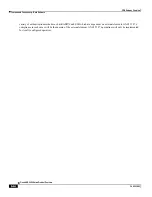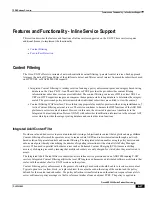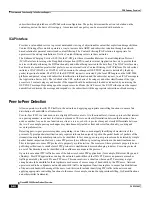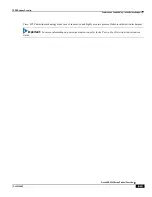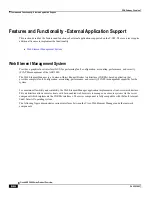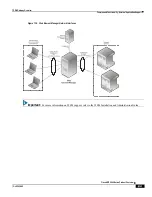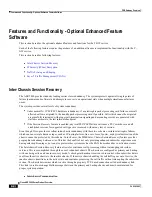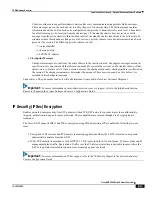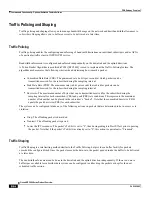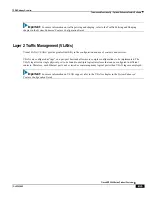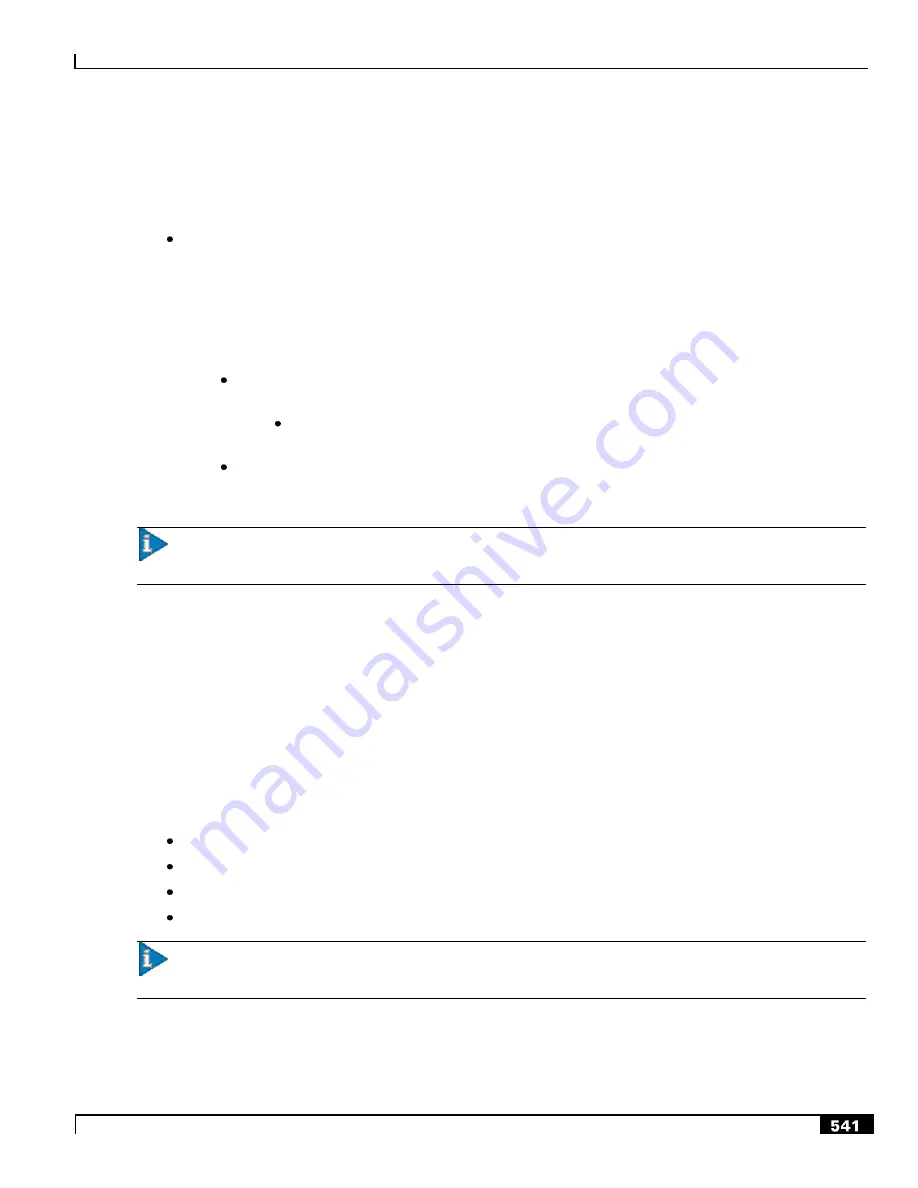
PDN Gateway Overview
Features and Functionality - Base Software ▀
Cisco ASR 5000 Series Product Overview ▄
OL-22938-02
impact the system‘s ability to service subscriber sessions. Congestion control helps identify such conditions and invokes
policies for addressing the situation.
Congestion control operation is based on configuring the following:
Congestion Condition Thresholds:
Thresholds dictate the conditions for which congestion control is enabled
and establishes limits for defining the state of the system (congested or clear). These thresholds function in a
way similar to operation thresholds that are configured for the system as described in the Thresholding
Configuration Guide. The primary difference is that when congestion thresholds are reached, a service
congestion policy and an SNMP trap, starCongestion, are generated.
A threshold tolerance dictates the percentage under the configured threshold that must be reached in order for
the condition to be cleared. An SNMP trap, starCongestionClear, is then triggered.
Port Utilization Thresholds
: If you set a port utilization threshold, when the average utilization of all
ports in the system reaches the specified threshold, congestion control is enabled.
Port-specific Thresholds
: If you set port-specific thresholds, when any individual port-
specific threshold is reached, congestion control is enabled system-wide.
Service Congestion Policies
: Congestion policies are configurable for each service. These policies
dictate how services respond when the system detects that a congestion condition threshold has been
crossed.
Important:
For more information on congestion control, refer to the Congestion Control chapter in the
System
Enhanced Feature Configuration Guide
.
IP Access Control Lists
IP access control lists allow you to set up rules that control the flow of packets into and out of the system based on a
variety of IP packet parameters.
IP access lists, or access control lists (ACLs) as they are commonly referred to, are used to control the flow of packets
into and out of the system. They are configured on a per-context basis and consist of ―rules‖ (ACL rules) or filters that
control the action taken on packets that match the filter criteria. Once configured, an ACL can be applied to any of the
following:
An individual interface
All traffic facilitated by a context (known as a policy ACL)
An individual subscriber
All subscriber sessions facilitated by a specific context
Important:
For more information on IP access control lists, refer to the IP Access Control Lists chapter in the
System Enhanced Feature Configuration Guide
.
Содержание ASR 5000 Series
Страница 1: ......
Страница 26: ......
Страница 48: ...New In Release 10 0 SCM Features Cisco ASR 5000 Series Product Overview OL 22938 02 ...
Страница 50: ......
Страница 58: ......
Страница 67: ...Product Service and Feature Licenses Default Licenses Cisco ASR 5000 Series Product Overview OL 22938 02 ...
Страница 68: ......
Страница 126: ......
Страница 138: ......
Страница 146: ......
Страница 218: ......
Страница 236: ......
Страница 356: ......
Страница 374: ......
Страница 422: ......
Страница 496: ......
Страница 572: ......
Страница 654: ......
Страница 700: ......
Страница 726: ......
Страница 784: ......
Страница 816: ......
Страница 839: ...Network Address Translation Overview How NAT Works Cisco ASR 5000 Series Product Overview OL 22938 02 ...
Страница 841: ...Network Address Translation Overview How NAT Works Cisco ASR 5000 Series Product Overview OL 22938 02 ...
Страница 844: ......
Страница 906: ......
Страница 926: ......
Страница 942: ......
Страница 943: ...Cisco ASR 5000 Series Product Overview OL 22938 02 Chapter 30 Technical Specifications ...
Страница 966: ......
Страница 967: ...Cisco ASR 5000 Series Product Overview OL 22938 02 Chapter 31 Safety Electrical and Environmental Certifications ...
Страница 972: ......

